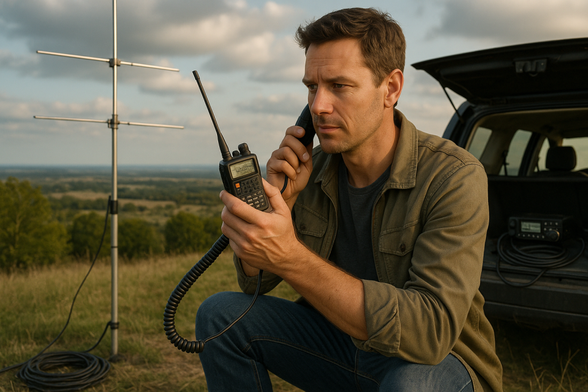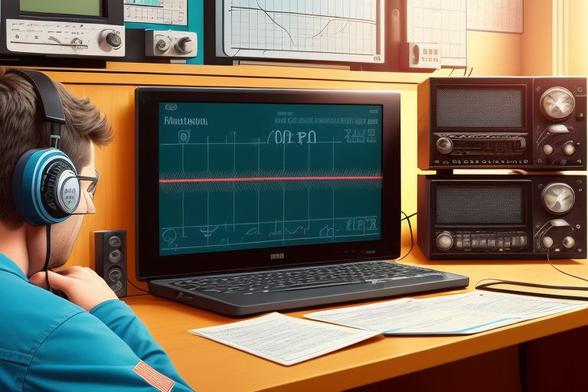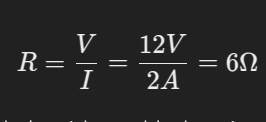Unlocking the Secrets of VHF and UHF: What Every Future Ham Radio Operator Absolutely Must Know
1,652 words, 9 minutes read time.
When you first step into the world of amateur radio, it feels a little like stepping onto another planet. There’s a whole language, culture, and way of thinking you have to learn. For guys gearing up to grab their first Amateur Radio License, getting a solid grip on the basics of VHF and UHF is a massive stepping stone. Even if your goal isn’t to become the next big contest operator or emergency comms wizard, understanding VHF (Very High Frequency) and UHF (Ultra High Frequency) will not only make you a better operator—it will set you up for success when you eventually take that license test. This guide is built to walk you through the essentials, without overwhelming you with overly technical jargon or theory you don’t need yet. We’re here to talk in plain English and get you prepared the smart way.
Starting from square one, VHF and UHF are simply sections of the radio frequency spectrum. VHF spans from 30 to 300 MHz, while UHF covers from 300 MHz to 3 GHz. Think of VHF like your favorite FM radio stations and UHF like your Wi-Fi router at home. These ranges aren’t random either—they’re carefully allocated by international agreements to prevent chaos on the airwaves. As ARRL (American Radio Relay League) clearly states in their guide on Frequency Allocations, amateurs are granted specific slices of these bands to experiment and communicate within. That permission is part of what makes the Ham Radio world such a special playground for technical exploration.
You already interact with VHF and UHF more often than you realize. Your car’s FM radio uses VHF. Those old rooftop TV antennas? VHF. Walkie-talkies and some cordless phones? UHF. If you’ve ever picked up a police scanner or tuned into a local weather broadcast, congratulations—you’ve brushed shoulders with these frequency bands already. This real-world familiarity makes amateur radio on VHF and UHF more intuitive than you might think.
In the amateur world, VHF and UHF are typically the first playgrounds new Hams explore. You’ll use these frequencies to talk to local operators in your town, hit repeaters mounted on tall towers, and even participate in emergency communication events. Groups like ARES (Amateur Radio Emergency Service) and RACES (Radio Amateur Civil Emergency Service) heavily rely on VHF and UHF during disasters because of their reliability and reach. According to Ham Radio School, VHF and UHF are especially useful for local, regional, and tactical communications when other systems fail.
The major differences between VHF and UHF come down to how the signals behave. VHF signals tend to travel farther across open land and over water but can struggle getting through urban environments packed with buildings. UHF signals, while typically not traveling as far horizontally, can sneak through small openings like windows and doorways much more effectively, making them kings of the concrete jungle. In a post on Ham Radio Prep, it’s highlighted that “VHF is better for outdoors and rural settings, while UHF wins in crowded cities.” Knowing this can save you a lot of headaches when you start deciding which bands to use based on where you’re operating.
As you start thinking about gear, it’s easy to get overwhelmed with choices, but keep it simple at first. Most newcomers start with a basic handheld transceiver—commonly called an HT. Brands like Baofeng, Yaesu, and Icom offer beginner-friendly models that cover both VHF and UHF bands. According to a detailed breakdown from DX Engineering, handheld radios are inexpensive, lightweight, and perfect for getting your feet wet. If you plan to operate from your car or home, you might later upgrade to a mobile radio with more power output (often 50 watts or more), but that’s a step you can take when you’re ready.
Antennas are the unsung heroes of your radio setup. A basic rubber duck antenna will get you started on an HT, but upgrading to a better whip antenna or even a small external antenna can make a huge difference. As OnAllBands explains, “In radio, the antenna is just as important—if not more important—than the radio itself.” A few extra feet of height on your antenna can sometimes outperform doubling your transmitter power. Speaking of which, don’t overlook the coaxial cable connecting your antenna to your radio. Cheap coax can introduce significant signal loss, especially at UHF frequencies. Start with good quality coax like RG-8X or LMR-240 and you’ll thank yourself later.
When you first get on the air, you’ll probably make most of your contacts through repeaters. A repeater is essentially a high-powered radio station, usually on top of a tall building or mountain, that listens on one frequency and retransmits your signal on another. Repeaters extend the range of handheld and mobile radios dramatically. The ARRL’s Repeater Directory is a great resource to find active repeaters in your area. You’ll often hear terms like “offset” and “PL tone” associated with repeaters. Offsets are simply the difference between the receive and transmit frequencies, while PL (Private Line) tones are subaudible tones that allow a repeater to filter out unwanted signals. These are easy to program into most modern radios once you understand the basics.
Understanding propagation is key to mastering VHF and UHF. Propagation simply refers to how radio waves travel from one point to another. Unlike HF (High Frequency) bands where signals can bounce off the ionosphere and travel thousands of miles, VHF and UHF signals typically travel “line-of-sight.” This means that if a mountain, hill, or large building is between you and the other operator, you might have trouble making contact. As the Ham Radio License Exam guide points out, “height is might” when it comes to VHF/UHF. The higher your antenna, the farther you’ll likely reach.
Operating practices in the VHF/UHF world are straightforward but vital. Always listen before transmitting to avoid accidentally stepping on someone else’s conversation. When making a call, keep it simple: just announce your call sign and state that you’re monitoring. An example might be, “This is K5XYZ, monitoring.” If someone responds, you’re off to the races. If not, no big deal—try again later. Good operating etiquette also means respecting other operators, avoiding excessive chatter on repeaters during busy times, and using simplex (direct) frequencies when appropriate to keep repeater traffic light.
One of the smartest moves you can make as a new Ham is participating in local nets. Nets are scheduled radio meetings, often organized by clubs or emergency groups, where operators check in and practice their skills. Finding a net is easy thanks to directories like QRZ Now or by simply asking around on your local repeater. Nets are welcoming to newcomers and offer a fantastic way to build confidence behind the microphone.
As you start transmitting, you’ll run into some common pitfalls. One of the biggest is overestimating your radio’s abilities. A 5-watt handheld radio won’t punch through a dense city skyline or thick forest without help from a repeater or external antenna. Another classic beginner mistake is forgetting to properly program your radio. While manual programming is a great skill to have, many new Hams use free software like CHIRP to make the job much easier. As KB6NU’s blog points out, getting comfortable with radio programming early on will save you a lot of frustration.
You might also be tempted to “upgrade” your setup with higher power or expensive gear too soon. Resist the urge. Spend your early months getting experience with what you have. Understanding your local terrain, local nets, and your own equipment quirks will make you a much better operator than simply buying bigger radios. Plus, learning to squeeze performance from a modest setup will pay dividends if you ever decide to move into emergency communications or portable operating.
There’s a fascinating future for VHF and UHF too. In an article by RadioWorld, experts discuss how new digital technologies, improved satellite communications, and even emergency alert systems are being built around VHF/UHF frequencies. These bands are not relics of the past—they’re alive, growing, and becoming more important than ever in a connected world.
In the end, mastering VHF and UHF isn’t just about passing a license test. It’s about learning the language of local communication. It’s about being able to reach out during an emergency when the cell towers are down. It’s about making new friends, participating in community events, and building technical skills that can lead to even bigger adventures like satellite communications, digital voice modes, and long-range contesting.
If you’ve made it this far, you’re already well ahead of most people starting their Ham Radio journey. Keep studying, keep listening, and most importantly—get on the air and practice. The airwaves are waiting for you, and so is an incredible community of operators eager to make that first contact with you.
Before you go, make sure to subscribe to our newsletter so you never miss helpful guides like this one! Also, we’d love to hear your experiences or questions—join the conversation by leaving a comment below. Let’s get you on the air, confident and ready!
D. Bryan King
Sources
- ARRL: What is Ham Radio?
- ARRL: Frequency Allocations
- Ham Radio School: UHF and VHF Propagation Basics
- Ham Radio Prep: What is VHF and UHF?
- DX Engineering: VHF/UHF Radios for Amateur Use
- QRZ Now: VHF and UHF Simplex Communications
- Ham Radio License Exam: VHF/UHF Propagation
- Ham Universe: What is a Simplex Repeater?
- ICOM America: Understanding VHF/UHF
- ARRL: Find Repeaters
- RadioWorld: Future of VHF/UHF Radio
- Ham Radio Secrets: VHF Radio Communication
- QSL.net: Introduction to VHF/UHF Wireless Communications
- KB6NU’s Ham Radio Blog: VHF/UHF Communications
- OnAllBands: VHF/UHF Antenna Basics
Disclaimer:
The views and opinions expressed in this post are solely those of the author. The information provided is based on personal research, experience, and understanding of the subject matter at the time of writing. Readers should consult relevant experts or authorities for specific guidance related to their unique situations.
Related Posts
- Unleashing the Power of Ham Radio: How Far Can You Really Communicate? Date November 20, 2024
- Crack the Code: Understanding AM, FM, and SSB for Your Ham License Date March 26, 2025
- The Amateur Radio Frequency Bands: What You Need to Know Date April 9, 2025
#AmateurRadio #amateurRadioForBeginners #amateurRadioHandbook #amateurRadioLicense #amateurRadioResources #beginnerHamRadio #emergencyCommunicationRadio #gettingStartedWithHamRadio #hamRadio #hamRadioAntennas #hamRadioBasics #hamRadioBeginners #hamRadioCommunity #hamRadioConversation #hamRadioGear #hamRadioGuide #hamRadioLearning #hamRadioNetCheckIn #hamRadioNets #hamRadioOperatingEtiquette #hamRadioOperatingTips #hamRadioProgramming #hamRadioSetup #HamRadioStudyGuide #hamRadioTips #handheldHamRadio #learnHamRadio #lineOfSightRadio #localHamRadio #mobileHamRadio #newHamRadioOperators #PLTones #radioFrequencyBasics #radioOperatorGuide #radioRepeaters #repeaterDirectory #simplexCommunication #startingHamRadio #UHF #UHFGuide #UHFPropagation #UHFRadio #UHFSimplex #understandingHamRadio #VHF #VHFGuide #VHFPropagation #VHFRadio #VHFSimplex #VHFUHFBasics #VHFUHFCommunication #VHFUHFDifferences #VHFUHFPropagation #VHFUHFRepeaters #VHFVsUHF



